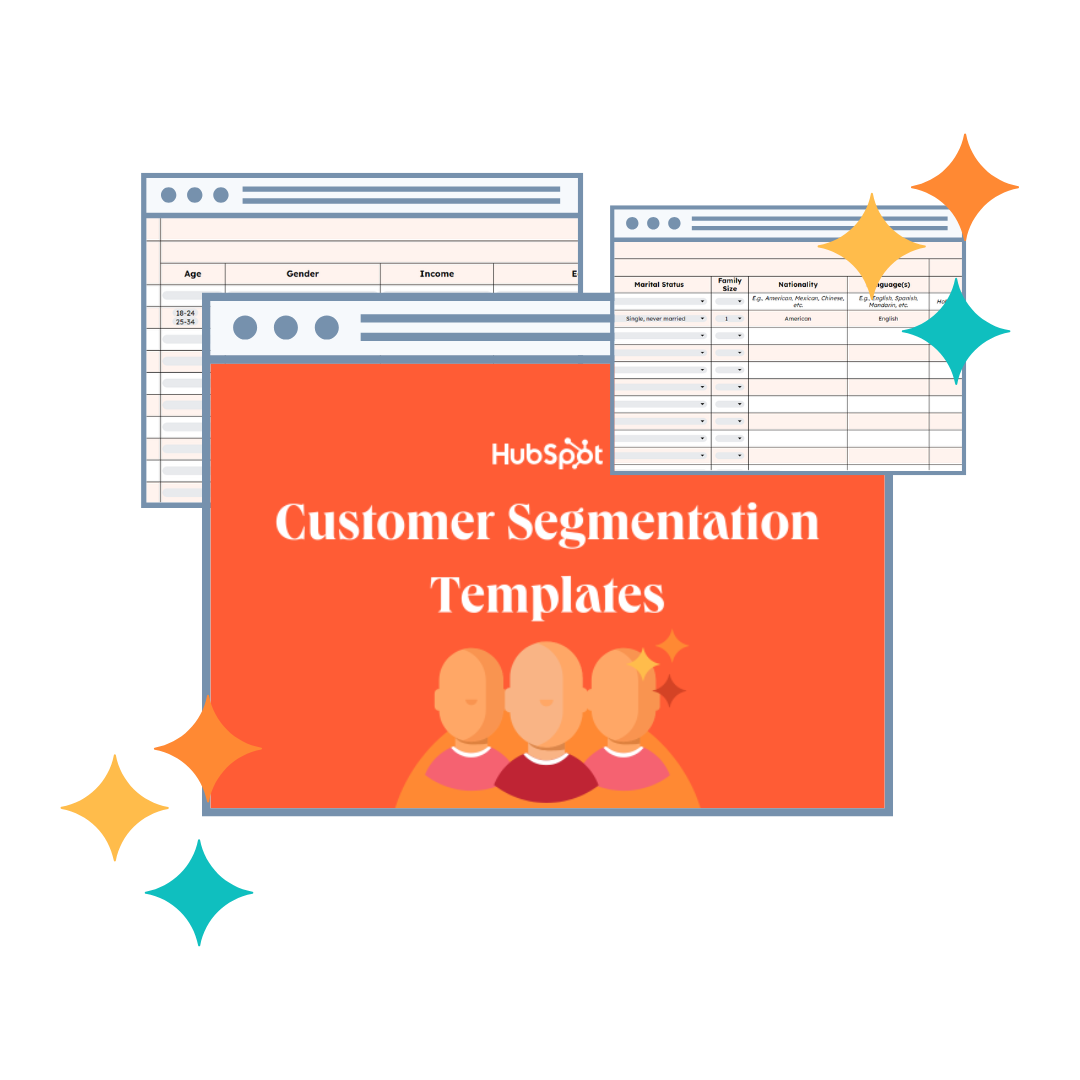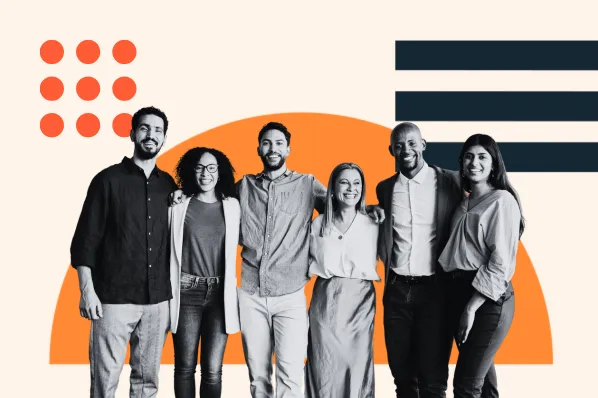In this piece, you'll learn about customer segmentation and see examples that can inspire you.
Table of Contents
Creating Customer Segments
Customer segmentation is the process of splitting your entire customer base into smaller segments based on shared characteristics. These can include demographics, behavioral, geographical, or psychographic data. When done correctly, customer segmentation helps you better understand users' needs and adjust your offering to satisfy them.
Companies Mastering Customer Segmentation
1. H&M
Type of segmentation: Demographic (date of birth)
One of the easiest and most common ways to segment your customers is by their date of birth. It gives you a great opportunity — and an excuse — to send them a personalized email without appearing pushy.
H&M is one of the brands that use this segmentation criterion. They offer birthday discounts, which are valid for a fixed time period. The 25% off is quite generous, and it would be a shame to let it go to waste.

Pro tip: You can go above and beyond by adding the customer's name to your birthday promotions. This makes your marketing seem more friendly and personal.
2. Argos
Type of segmentation: Demographic (income)
Understanding how much a customer is willing to spend is crucial for any business. This information is particularly useful if you offer both affordable and expensive options. If you assess your clients' income correctly, you're able to present the right offers to the right group.
A great example of this is the retail chain Argos. They offer a wide range of products, from appliances and furniture to clothing and jewelry. By looking at their customers' past purchases, they're able to estimate their budget and age.
Below is an example of a coupon Argos emailed its middle-class clients around payday.
Notice how the message acknowledges their clients' hard work and encourages them to "treat themselves." This can mean getting their kids a new toy, buying a new pair of jeans, or some new piece of home decor.
Pro tip: Creating an income-focused segment helps you show empathy. It also allows you to assess what each group will consider an attractive price. By doing so, you can increase your chances of making a sale.
3. KLM
Type of segmentation: Behavioral
If you're a traveler, there's a high chance you're a member of a frequent flyer program, like Flying Blue by KLM. This customer loyalty program allows you to earn miles and then spend them on tickets, extra checked luggage, shopping, or charity donations.
You can earn miles in numerous ways, including:
-
Flying with KLM or one of their partners.
-
Booking a hotel.
-
Renting a car.
-
Shopping with one of KLM's partners.
The number of miles customers get is based on the ticket price and their elite status level. Flying Blue has four status levels. The higher the level, the more points customers get.

What we love: Introducing a customer loyalty program is a great tactic to keep customers engaged and prevent them from switching to another airline. Segmenting customers by points allows the airline to reward those who fly more frequently.
4. Comcast
Type of segmentation: Psychographic/demographic
Did you know that college students in the US have $574 billion in spending power? It's an attractive demographic. For this reason, Comcast created a special offer targeted at students specifically.
The company partnered with Amazon Music and HBO to give students access to thousands of free shows, movies, and live sports. The deal was gated, and students had to verify their eligibility before subscribing, which made the offer even more exclusive.
The deal was a huge success, and within a week Comcast saw a massive increase in web traffic and a boost in conversions.

What we love: This program segmented customers by demographic (age and education level) as well as behaviorally. College students are less likely to pay for cable but still want ways to watch their favorite shows and movies.
5. Coca-Cola
Type of segmentation: Geographical
Another customer segmentation example is splitting buyers into groups based on their location. That's the approach Coca-Cola follows. They sell their products globally. While many drinks like Coca-Cola are available in over 200 countries, some like Ciel bottled water are only sold in Mexico, Morocco, and Angola.
The brand tailors its offering to local tastes. For example, they acknowledge that consumers in Asia prefer sweeter flavors than those in the US or Europe. They modify their drink formula to satisfy different preferences.
What we love: Segmenting buyers based on geography allows the brand to better recognize cultural and climate differences, which drive customers' buying preferences. Tailoring their offer accordingly helps companies reach a wider audience and maintain a high market share.
6. Nalu
Type of segmentation: Psychographic (state of urgency)
Nalu is a boutique women's clothing brand. Each collection features a limited number of items, which are added to the online store throughout the season in "product drops." Like many small businesses, Nalu has a relatively modest, but loyal client base. There's one customer segment that's particularly enthusiastic about new products, i.e., newsletter subscribers.
Nalu knows how to make this group feel appreciated, all the while creating a sense of urgency. Newsletter subscribers receive an exclusive link, which unlocks new items 24 hours ahead of their launch in the store. This way, clients can buy clothing in their size before it runs out of stock. They use the same approach for their archive collection sales.
What we love: Nalu is a great example of how you can use customer segmentation to strengthen the bond with your high-value clients. Not to mention, this tactic offers a great way to boost revenue from clearing older items.
7. Duolingo
Customer segmentation: Behavioral
For the language app Duolingo, retaining users comes down to keeping them motivated as they memorize new words and phrases. They realize that most language learners eventually lose their initial drive and need a pick-me-up to continue studying. That's why Duolingo has decided to create user segments based on in-app behavior and milestone achievements.
Those who complete lessons receive badges and rewards. These can be exchanged for extra assignments. Meanwhile, those who've skipped a lesson (or two, or ten) start receiving motivational reminders.
Pro tip: Tailoring your in-app notifications and email sequences for each customer segment is a great way of preventing app abandonment. Active users feel appreciated, while those who lose motivation are brought back on track.
8. L'Oreal
Customer segmentation type: Demographic/psychographic
L'Oreal is one of the most recognizable beauty brands in the world. Many of their clients have been loyal to the brand for decades. Perhaps unsurprisingly, they are very popular among older clients.
The average L'Oreal customer is around 50 years old in the Netherlands. That being said, the company noticed that they can't resonate with younger clients well. They've failed to do so by simply breaking down their customer base into age segments.
To tackle this, L'Oreal joined forces with Google and McCann. They wanted to learn how they can create more accurate segmentation criteria. The brand broke down Gen-Z's and Millennials into not just age, but also behavior-focused batches.
By using Google's audience segments, they created twelve ad variations. Each is for a different group of potential buyers. One of the video ads they've created targeted young music lovers. It featured a product for acne-prone skin, and a tagline "99 problems, and your skin is one?" The ad references one of the most famous pieces in hip-hop history that will be familiar to Millennials.
What we love: Digging deep into behavioral data helps L'Oreal restore (and maintain) relevance among all customer groups. It's also a great example of how you can supplement demographics with more sophisticated user contexts.
Getting Customer Segmentation Right
Customer segmentation is a powerful tool. One that puts personalization and unique client needs front and center. As you've seen in the customer segmentation examples above, there are plenty of criteria you can use to strengthen your bond with clients.
Be it age, location, budget, personal beliefs, or on-site behavior — the choice is yours. Good luck!
Customer Segmentation



![Customer Profiling in 10 Easy Steps [+ Templates]](https://53.fs1.hubspotusercontent-na1.net/hubfs/53/customer-profiling_2.webp)

![How to Get B2B Customer Segmentation Right [+Tips]](https://53.fs1.hubspotusercontent-na1.net/hubfs/53/b2b-customer-segmentation-1-20250109-7176487.webp)






